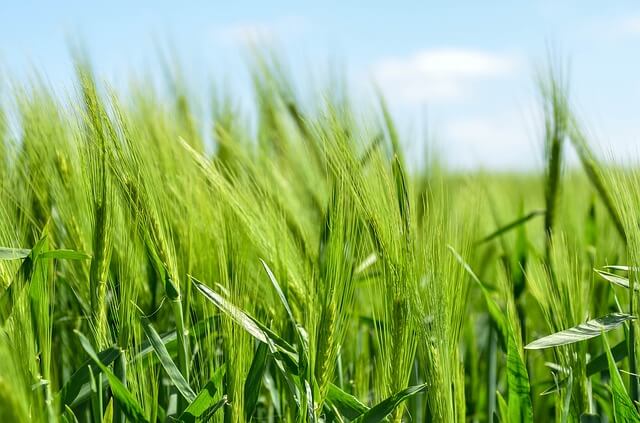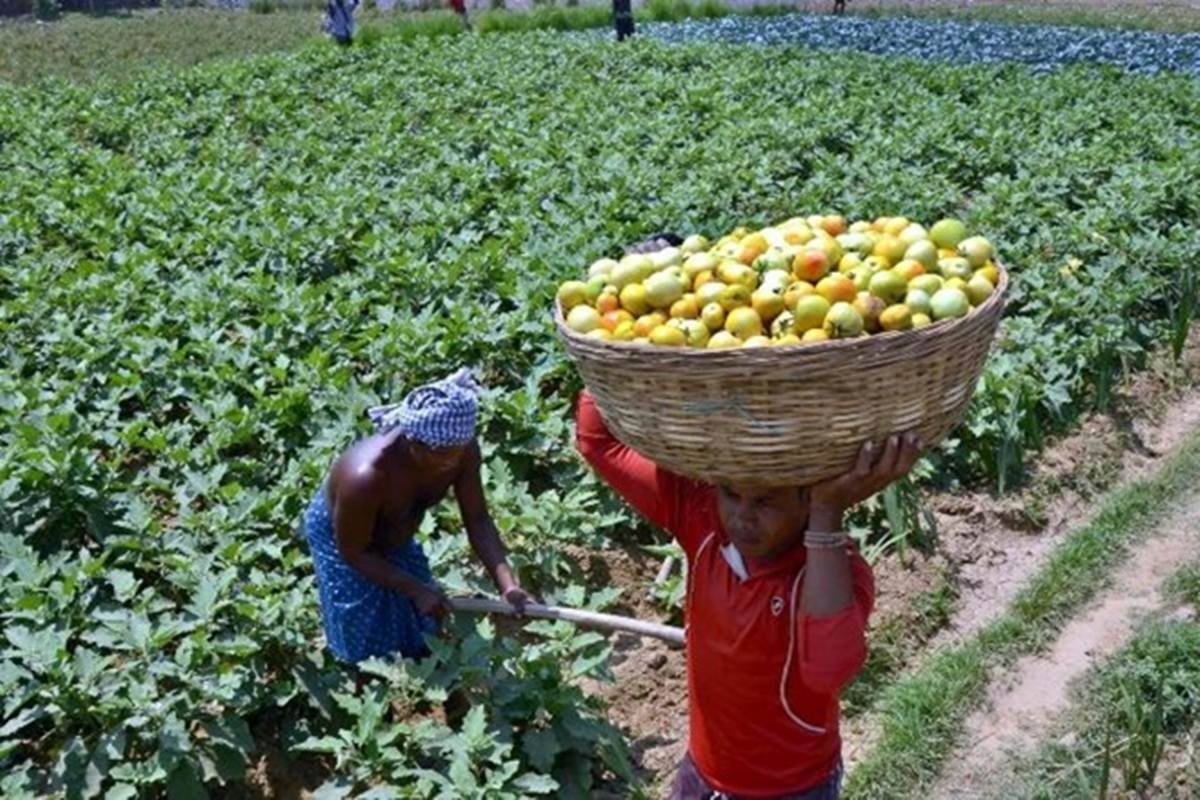India is the land of villages, and the primary economic activities which drive our villages are Agriculture and its allied sectors. Agriculture has a significant contribution to the Gross domestic products of India. In this section, we will learn about our agricultural system in brief. The important allied sectors of agriculture are fishing, forestry, and dairy farming.
Economic & Social Significance Of Agriculture’s Allied Sectors
It contributes to the National Income (11.5% – 13.5%). It contributes to employment (52% – 58%). It is the source of Food Security and Self-Reliance in food production. It a source of export and earnings of foreign exchange. Marine export is the largest contributor to the agriculture & allied sector in the Indian Economy. Rural infrastructure development and improvement in accessibility and communications.
It has contributed to and supported expanding urbanization and industrialization. It has supported and strengthened backward (or) upstream linkages and forward (or) downstream linkages.
Agricultural Seasons & Related Crops
On the basis of seasonal distribution of temperature and rainfall and related crops, these & agricultural seasons are identified in India.
Kharif: These crops are related to the hot and humid southern western monsoon season. Important Kharif crops are; Paddy (Rice), Cotton, Jowar, Bajra, Sugarcane, Groundnuts, Maize; In high rainfall region, Paddy and sugarcane are grown; In low rainfall regions Jowar, Bajra, Maize, and Groundnuts are grown. In low rainfall regions, the cultivation of paddy (Western UP, Punjab, and Haryana), sugarcane (Maharashtra), and cotton (Punjab & Haryana) are based on assured water supply through irrigation.
Rabi Crops: These are winter season crops. These require moderate temperatures (15-20oc). What, Barley, Potatoes, Mustard, Peas, and Gram are important crops.
Zaid Crops: These are summer crops associated with the hot and dry season. Irrigation is required. Important crops are watermelon, cucumber.
Modernization of Agriculture and Allied Sector
At independence, the agriculture and allied sector were stagnated and declining. As economic planning started in India, rural and agricultural development became an important component of the economic and social development of India. The following institutional changes have been introduced in the rural and agricultural sector such as land reforms, agricultural price policy, credit, insurance, and marketing
Land Reforms
Abolition of zamindari, consolidation of land, and land ceiling were the three most important components of land reform. With the abolition of zamindari, ownership of land was transferred to the cultivators of the land. Land consolidation is a process of converting small and fragmented land into a bigger and consolidated landholding to maintain the economic size of landholding.
Improvement in the modernization of technology and convenience in farming. The land ceiling is the process of redistribution of land by taking away surplus land from the large farmers and redistributing amount to small farmers, marginal farmers, and landless laborers.
Agriculture Price Policy
The objectives of agriculture price policy are a fair return to producers on their produce; Stability in production and cropping pattern; Price stability in the market, and Food security. The components of this policy are the minimum support price, procurement price, buffer stock, and issue price.
Minimum Support Price (MSP): It is declared by the government before or on the sowing season of a crop. With this, the government assures farmers and producers, a fair return on their production in case there are over-production and fall in prices. So, if supply is more than demand then prices are low. So, to prevent this vicious cycle of the economy from being started the government tries to maintain MSP.
Procurement Price: It is the price at which the government buys food from the farmers through the FCI (Food Corporation of India). In general, the Procurement Price must be greater than the Minimum Support Price.
Buffer stock: It is maintained by FCI to meet contingency and fall in food production. It is a reserved stock of food maintained by FCI in warehouses distributed throughout India.
Issue Price: It is the price at which food grains are sold to consumers through Fair Price Shops / Ration Shop. It helps in maintaining food security and price stability in the market.
Credit
Institutional credit supply is a pre-condition for the modernization of agriculture. Credit availability and accessibility greatly determine the timely application of inputs like Improved seeds, Chemical fertilizers, insecticides, & pesticides, Irrigation, and Machines.
The above socio-economic scenario of Indian agriculture is made better and targeted for all-round benefit by the institutions, Nationalization of Banks, Regional Rural Banks, Co-operative Banks, and Kisan Credit Card Scheme. This scheme extends credit before the start of the season. It provides start-term credit at low-interest rates.
Insurance
It is for ensuring crops against natural hazards and calamities which resources sustainability in cropping patterns. Here the products of rural and cottage industries are marketed and sold in domestic and export markets. These agencies ensure genuine prices to the farmers and countrymen.
Technological Modernization
Technological modernization in agriculture and allied sectors are achieved by the following prerequisite inputs; Improved Seeds; Assured Water Supply; Chemical Fertilizers; Chemical Insecticides and pesticides and Machines On-Farm & Off-Farm (Post-harvest technologies)
Improved Seeds: These are also called High Yielding Variety Seeds (HYV Seeds). There are two kinds of HYV SEEDS, viz: Hybrid Seeds, and Genetically Modified Seeds.
HYV seeds have a short period of maturity. So, Multiple Cropping is adopted. This improves crop intensity thereby improving agricultural production & productivity. In this way, the success of the Green Revolution was realized.
Assured Water Supply: Agriculture in India is called the Gamble of Monsoon. Assured water supply is a pre-condition for sustainable and stable production and productivity.
Assured water supply increases the Crop Intensity and Multiple Cropping. It also induces a change in the Cropping Pattern and Crop Combination. For instance, the introduction of the Indira Gandhi Canal Project in Rajasthan has converted the region to a major Region of Mustard Cultivation (Northern Western Rajasthan); Improved irrigation has induced Paddy Cultivation & Cotton in Punjab & Haryana; and Sugarcane in Maharashtra (which traditionally pertained to UP & Bihar).
Chemical Fertilizers: It assures nutritional security to crops and plants which are dependent on improved seeds that have Shorter Maturity Period and Grow Faster. Nitrogen, Phosphorus, Potassium in the ratio 4:2:1 is considered ideal.
Chemical Insecticides & Pesticides: These assure security to crops and plants against the attack of insects and pests during on-farm conditions as well as off-farm conditions when the product is under storage. These way wastages are reduced and minimized. This is one of the major components which raise the market prices of fruits and vegetables.
Use of Machines: Machines are the replacement of human labor. The use of machines improves efficiency and productivity. These are used mostly with High Yielding Varieties of seeds and during the practice of Multiple Cropping.
With the use of machines in the Agriculture Sectors, Human Labor becomes a surplus which can be shifted to the Industry, Manufacturing & Services Sector to become more productive and efficient. Thus there must be a vibrant & growing secondary sector to absorb this surplus labor.
Post-Harvest Technology (Or) Off-Farm Technology
Storage of Agricultural Produce: These are involved in the storage of agricultural produce. Warehouses Proper management of these helps. Cold storages reduce wastages during storage and thus realizes refrigeration of the income to the farmers. For all these (cold storages & refrigeration), Electricity & Power is a pre-requisite.
Processing: These are Agro-Processing & Food Processing industries that are involved in value addition. Processing industries in the rural and agricultural sector results in Rural Industrialization which has the following benefits to it, Income Generation, Employment, Growth of the rural economy, and Absorption of surplus labor. For rural industrialization Power, Transport & Communication are a prerequisite,
Programs & Policies Related to Agriculture & Allied Sectors
- Green Revolution: (For food grains) Improving the production and productivity of food grains, starting 1967-68.
- White Revolution: For improving production and productivity of milk, starting 1970.
- Blue Revolution: For improving the production and productivity of fish, starting in 1970.
- Yellow Revolution: For improving the production of oilseeds & pulses, starting.
- Golden Revolution: For improving production and productivity of flowers, fruits, and vegetables
- Silver Revolution: For improving the production and productivity of Poultry.
- Brown Revolution: For improving production and productivity of Spices.
- Apiculture: For improving production and productivity of Honey
- Silviculture: For improving the production and productivity of Timber Plantation.
- Social Forestry: Expanding forests were beyond the forest area.
- Agro-Forestry: Combining crop production and Forestry together where trees/forests are grown on the margins or bunds of the fields.
- Farm Forestry: Conversion of Cropland into forest cover. Rainbow revolution: This is for diversification of crops.


